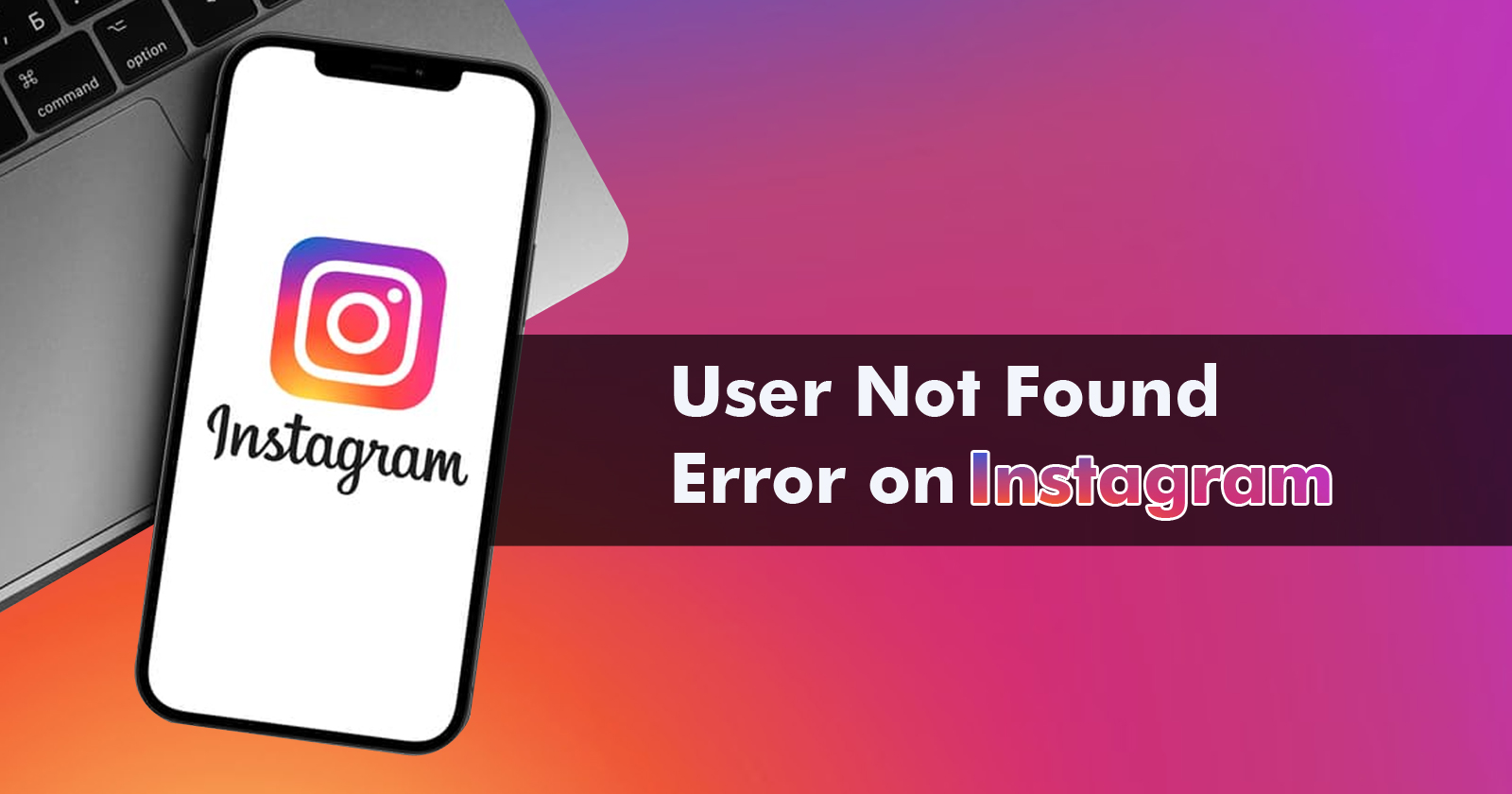Top 13 Business Blog Examples to Inspire You
Discover our curated list of the Top 10 Business Blog Examples. Get inspired and learn how to elevate your own business blogging strategy for success.

Embarking on the journey of creating a business blog can be a significant challenge, especially when considering the complexities of its structure. Our investigation involved a systematic evaluation of numerous web platforms to uncover the secrets of crafting an outstanding business blog. The outcome is a carefully curated collection of exemplary business blog examples. Through this exploration, we identified eight fundamental elements essential for the success of any business blog.
With the extensive expertise of our content marketing agency, which boasts partnerships with renowned enterprises, we’ve gained invaluable insights into what makes a business blog truly exceptional. Join us as we delve into the characteristics that set these blogs apart and highlight the factors contributing to their remarkable success.
Eight Essential Elements of a Business Blog
Contents
- 1 Eight Essential Elements of a Business Blog
- 1.1 Tushy: Well-Defined Audience
- 1.2 Tommy John: Clear Topic Authority
- 1.3 BarkBox: Structured Content Pillars
- 1.4 Squarespace: Visible Navigation
- 1.5 Casper: Unified Brand Style
- 1.6 CreditRepair: Varied Calls-To-Action (CTAs)
- 1.7 Annuity.org: Expertise, Authority, And Trust
- 1.8 Lemonade: Flexible Site Functionality
- 2 Other Business Blog Examples
- 3 FAQs
Creating a business blog sets the stage, but SEO is the spotlight that makes it visible. It’s essential to hire an online marketing service provider for driving targeted traffic, ensuring your valuable content reaches the right audience and achieves its full potential.
A thriving business blog, regardless of industry, company type, or product/service offered, consistently exhibits key characteristics:
- Well-defined audience
- Clear topic authority
- Structured content pillars
- Visible navigation
- Unified brand style
- Varied calls-to-action (CTAs)
- Timely content
- Useful user functions
Tushy: Well-Defined Audience
Recognizing that a one-size-fits-all approach is ineffective in crafting compelling content is crucial. Generic content often comes across as vague and fails to capture attention. The key is specificity—tailoring your content to meet the needs of a specific target audience.
Begin by identifying your business’s target demographic. Consider aspects such as age, gender, education, family or marital status, and employment sector. Dive deeper by considering shared experiences or hobbies. Aim to establish three to five distinct demographic “profiles” within your broader audience.
Consider the e-commerce bidet shop, Tushy. They exemplify this approach with their blog, “The Posterior,” which aligns with their product’s primary selling points: health benefits and sustainability. The content directly addresses an audience for whom these benefits are significant, covering topics from gut health and sexual wellness to broader themes like physical exercise and relationships.
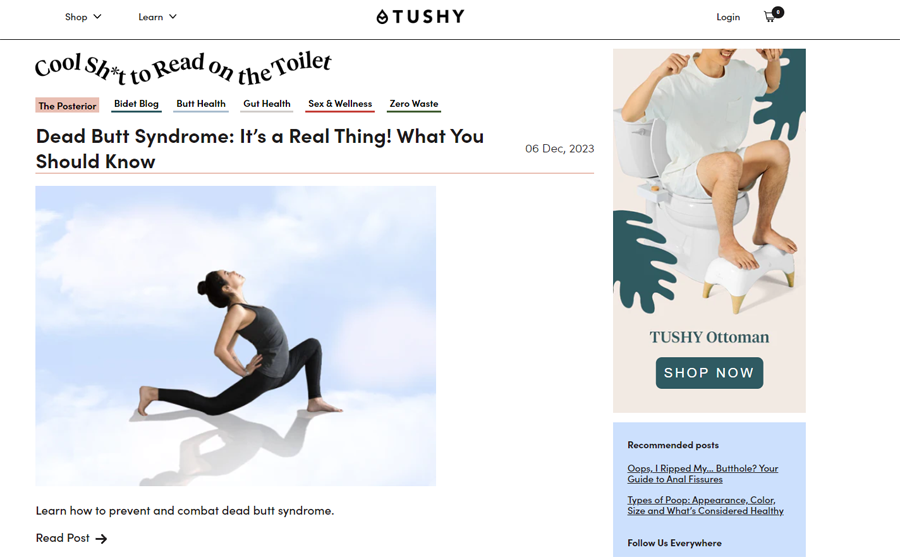
It’s also important to factor in the target reader’s age, gender, income, profession, core interests, and shared experiences. Tushy’s visual design resonates with its demographic, primarily younger individuals with unconventional lifestyles and discretionary income. The clean, aesthetically pleasing design and cheeky brand voice further enhance this connection. We’ll explore design components in more depth later.
Tommy John: Clear Topic Authority
Once you’ve identified your target audience, align your content themes with their interests. Note that not every topic appealing to your audience will fit seamlessly into your blog. Choose subjects that not only engage your audience but also fall within your brand’s area of expertise.
The optimal blog themes lie at the intersection of audience interests and your brand’s proficiency. Consider Tommy John, a premium leisure apparel company. They’ve successfully executed this strategy.

Tommy John’s upscale apparel naturally appeals to individuals with higher incomes who value quality. Accordingly, the blog’s readership likely includes those who appreciate luxury goods and experiences. However, it’s vital to maintain strategic alignment. While readers might be interested in evening dresses or expensive jewelry, such content would be off-brand for Tommy John, whose expertise is in casual wear, not formal attire or high-end jewelry.
Thus, their site skillfully balances high-end living with relaxed, informal content. This strategy not only appeals to the audience’s tastes but also remains true to the brand’s authority.
Also Read: Unlock Opportunities on Top Freelancing Websites in India
BarkBox: Structured Content Pillars
When you’ve selected specific content topics, presenting them effectively through well-structured content is crucial. Blogs with organized content pillars and subject clusters convey relevance, authority, and professionalism to their readers. In contrast, if information is scattered or hard to find, the blog may appear cluttered and disorganized.
A prime example of effective site navigation is BarkBox, a subscription service for dog owners. Their blog, BarkPost, features seven primary content pillars, each subdivided into smaller segments.
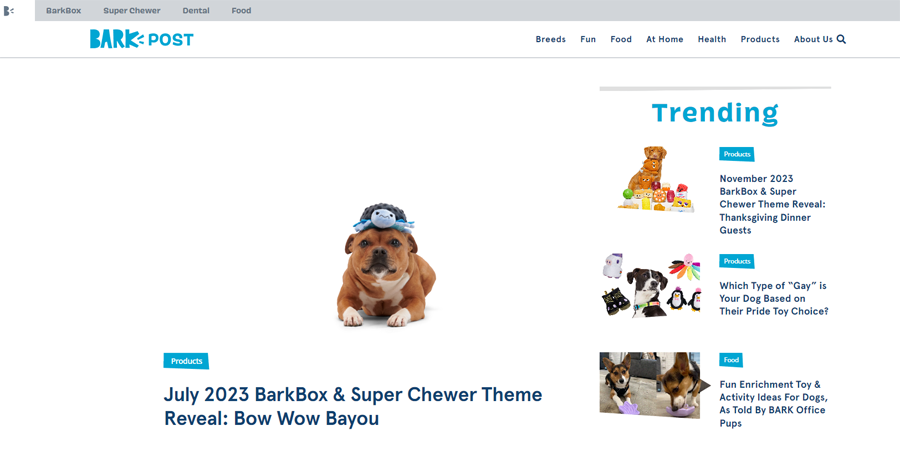
While some blogs function well with a few thematic pillars, managing a large volume of information without a structured framework can be challenging. BarkPost excels at using pillars and clusters, accommodating a wide array of content categories and types without overwhelming users.
The importance of clear content pillars also extends to SEO. A structured information framework is a strong signal of authority to Google’s ranking algorithm. It’s not just about an organization—it enhances the blog’s reputation and visibility in search results.
The effectiveness of content pillars depends on their seamless integration into your site’s structure to ensure user accessibility throughout their journey. This requires a well-designed, user-friendly navigation bar or menu.

Consider Squarespace’s Making It blog as an example. Its pillar structure is straightforward, with sections like “On Trend,” “Makers,” “Know,” and “Video.” The standout feature is the navigation bar’s persistent presence on all pages, providing users with a consistent tool for easy navigation across the blog.
Some blogs enhance the user experience with a “floating element” in their menu that moves with the user as they scroll. However, Squarespace uniquely maintains a constant presence of the main navigation bar on every page, allowing users to effortlessly explore product pages at any point during their browsing.
In contrast, some companies place their blogs in a subdirectory, creating a disconnect from the main website on pillar or post pages. This approach can hinder the user journey. Conversely, making product pages easily accessible greatly increases the likelihood of converting site visitors into customers.
Casper: Unified Brand Style
Achieving a unified visual experience in your content requires more than just thematic focus; it necessitates a consistent and well-organized visual approach across your blog.
Establishing a detailed style guide is essential. This guide serves as an anchor, ensuring that every page and post maintains uniformity in typefaces, brand colors, and illustration styles, creating a cohesive and polished look across your content.
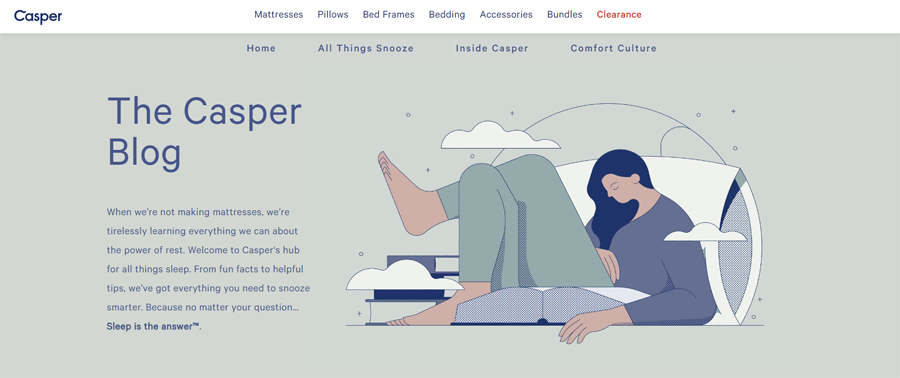
However, it’s important to balance cohesiveness with variety. While uniformity is crucial, you don’t want your content to appear too similar. A flexible brand guide is key, offering diverse options and combinations for design flexibility while maintaining visual coherence across posts.
Casper, the online mattress retailer, demonstrates mastery in this balancing act. Their blog aligns with their brand’s general design theme, yet individual posts exhibit unique visual styles within this framework, adding dynamism to their content and reinforcing the brand identity.
For establishing and implementing visual brand guidelines, consider these resources:
- Coolors: A palette-generating tool to help you create an appealing color scheme.
- Canva: A design platform with templates for brand guideline documents, simplifying the creation of your guide.
- Google Fonts: An open-source collection offering a wide range of typefaces for typographic consistency.
- Unsplash: A resource for free high-quality stock photos, enhancing your content visually without sacrificing quality.
CreditRepair: Varied Calls-To-Action (CTAs)
A well-structured blog engages consumers on your website, increasing their likelihood of conversion. Each post should encourage readers to explore more content, visit product pages, or learn about your company.
Diversifying CTAs is key to retaining readers post-reading. Not all CTAs should lead directly to product pages; include “soft” conversion options for those not ready to buy but interested in learning more.
For instance, consider CreditRepair.com’s post on “Three Main Types of Credit.” This top-funnel, educational topic may not immediately appeal to those seeking credit repair services. Therefore, the brand wisely includes internal links to middle and bottom funnel topics, bridging the gap between the current post and its core offerings.
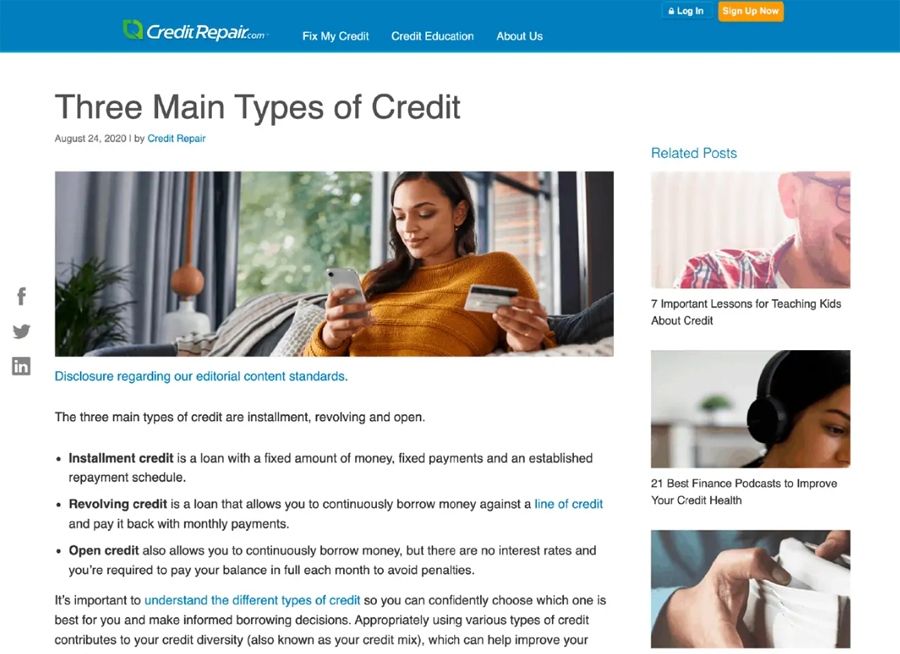
Avoid overloading pages with product-focused CTAs, as it can create a sales-oriented atmosphere and undermine the blog’s credibility with readers and search engines like Google. Creative navigation pathways, and encouraging lateral movement across blog pages, are vital. While not directly linked to immediate conversions, strategies that engage visitors longer can contribute to long-term success.
Annuity.org: Expertise, Authority, And Trust
Establishing authority for your blog is significantly influenced by thoughtful topic selection. Yet, when tackling subjects related to “Your Money, Your Life,” it’s essential to demonstrate reliability, especially given Google’s algorithm’s emphasis on accountability.
Annuity.org serves as a prime example of enhancing trust in posts, particularly relevant for content about investment and retirement planning.
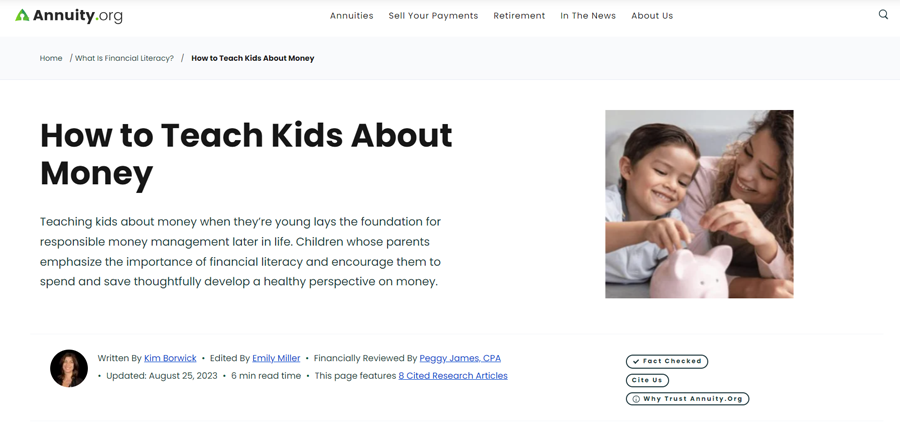
Each blog post is attributed to an individual author, rather than a generic “team” or brand. This seemingly minor detail enhances trust in the brand’s accountability.
Moreover, Annuity.org assigns a specific editor to each post, endorsing the author’s expertise and ensuring thorough review for accuracy and quality.
Additionally, each post meticulously lists references in the footer, including authors, publications, and links. This comprehensive referencing allows readers to quickly assess the quality of the sources, a key step in building trust. It’s more than a best practice; it’s a direct and transparent way to instill confidence in your content.
Lemonade: Flexible Site Functionality
The user experience in an ideal blog setup should be intuitive, allowing readers to easily find any information they need. To accommodate unpredictable user needs, integrating flexible navigation functionality is crucial.
Consider Lemonade, an insurance company, whose blog exemplifies easy access. The user-friendly style is augmented by a large, prominently placed search bar, enabling quick content discovery.

In contrast, many sites use a Google Sitelinks search box, leading to results in the standard Google SERP format. This approach can be cumbersome and detract from the user experience.
Lemonade’s site-specific search bar keeps the experience within the site itself, simplifying the search process and showcasing advanced development features. This reflects the site’s overall quality and, by extension, the brand.
Another key element for flexible navigation is a footer menu. This menu provides links to additional information, complementing the main navigation bar focused on the blog’s primary content pillars. It might include links to the company’s job page, FAQ section, contact information, and blog homepage. The goal is to offer a comprehensive and user-friendly experience that extends beyond the blog’s main content.
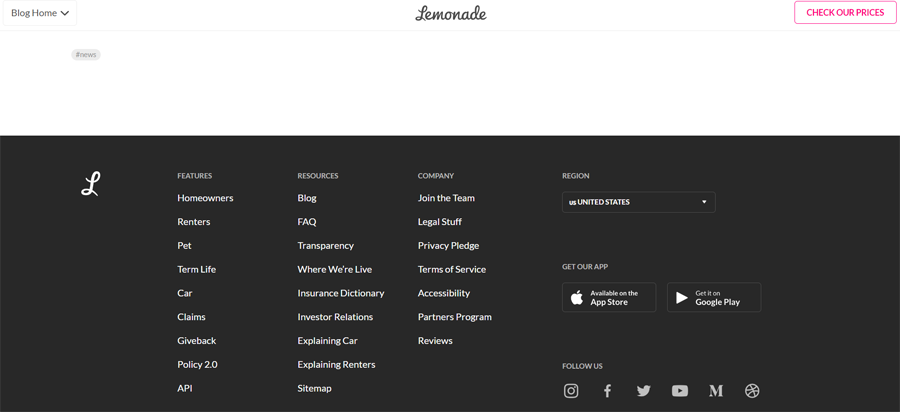
Other Business Blog Examples
Understanding the elements of an exceptional business blog helps you recognize them across different companies. From large multinationals to unique small businesses, software firms, or subscription box services, they all employ fundamental strategies to create a top-notch blog. The examples below showcase how these strategies are consistently implemented.
Also Read: How to Create a Blog for Free and Earn Money From Home in 2024?
Creating a blog that integrates seamlessly with product pages while avoiding an overly sales-driven tone is a delicate challenge for retailers and e-commerce firms. Balancing informative content with subtle promotion is key. Anthropologie’s approach is notably effective.
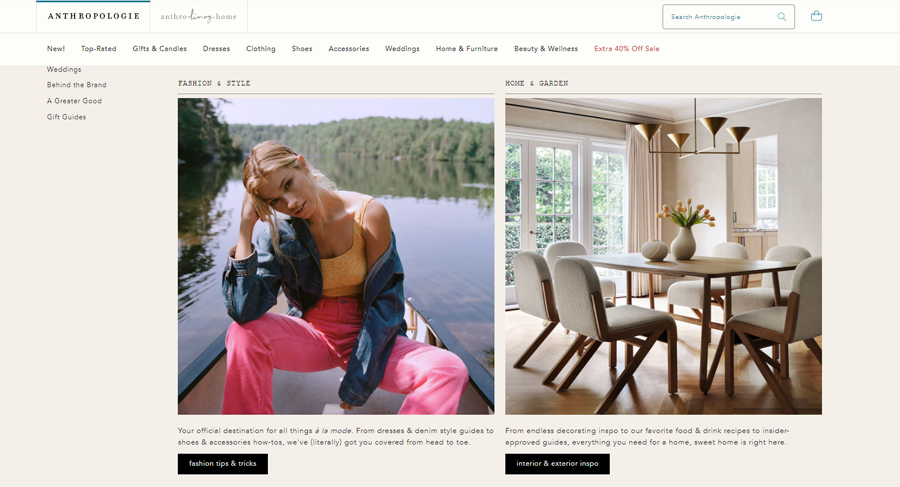
Anthropologie’s blog exudes a genuine, non-commercial feel, distinguishing itself from typical product pages. It offers engaging content within a space that feels less like a marketing platform and more like a blog. The transition from the main site to the blog is smooth, maintaining a consistent user experience without abrupt changes in tone or style.
Anthropologie’s success lies in its skillful use of product images within blog visuals. Rather than isolating the blog from its product-centric nature, they cleverly incorporate product photos as headers for blog entries. This strategy blends promotional elements organically into the blog, allowing the business to showcase products authentically while preserving the essence of a genuine blog.
Five O’Clock By Harry’s Razors
Harry’s Razors’ online magazine “Five O’Clock” exemplifies simplified site navigation that transcends traditional scrolling menus. Instead of overwhelming their blog with numerous options, Five O’Clock adopts a straightforward design. A prominent “Shop Harry’s” button at the top of the page minimizes clutter.
This layout provides easy access to the company’s product pages while keeping the design clean and uncluttered. By eschewing the complexity of multiple menus, Five O’Clock strikes a balance between accessibility and aesthetic appeal.
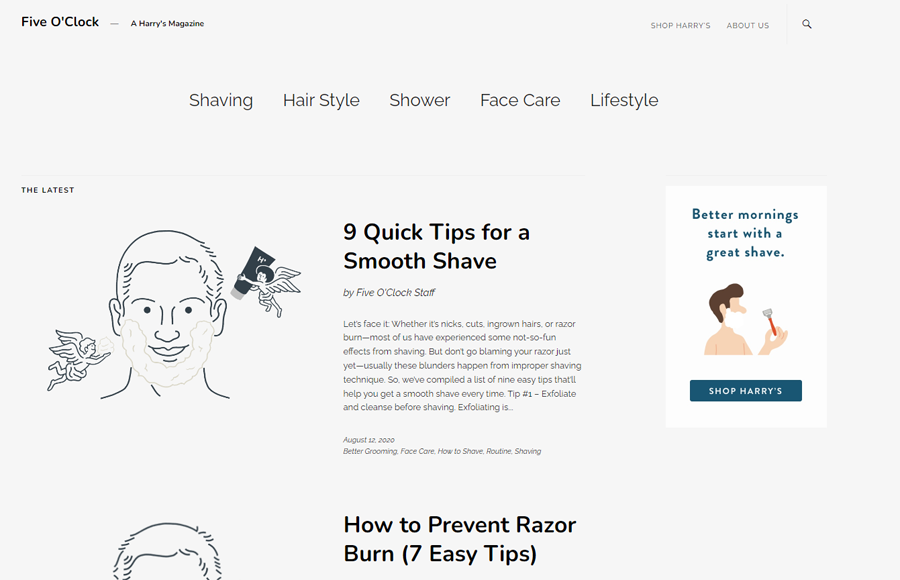
What sets this design apart is its user-centric focus. Users can easily transition from consuming content to exploring product options with a single click. The intentional minimalism reflects a thoughtful approach to maintaining a clean user interface while ensuring quick access to essential information.
In essence, Five O’Clock challenges the notion that effective web navigation requires an extensive, scrolling menu. It demonstrates that simplicity and functionality can coexist, offering users a streamlined experience. This design philosophy underscores the importance of considering the user journey and maintaining a clean interface without compromising on quick access to key content.
For a unique take on alternative Calls-To-Action (CTAs), VINEBOX’s blog is an excellent example. On their site, the side menu offers a variety of options, including direct access to product pages, recommended blog entries, links to the brand’s social media pages, and a showcase of user-generated content. This diversity is a rich source of inspiration for those looking to enhance their own CTA strategies.
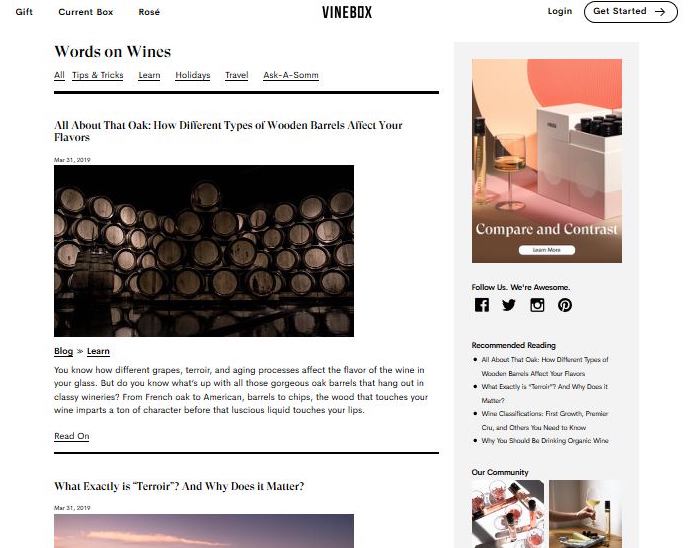
The VINEBOX blog demonstrates the power of well-crafted alternative CTAs. The side menu on their site presents an array of choices, allowing visitors to explore detailed product information, peruse recommended blog posts, connect with the brand on social media, or immerse themselves in featured user-generated content. This approach makes discovering engaging alternatives for your CTAs straightforward and effective.
Seeking inspiration for diverse CTAs? Look no further than VINEBOX’s blog. The side menu on their homepage guides visitors through a comprehensive selection of options. Whether delving into product details, exploring recommended blog articles, connecting on social platforms, or engaging with user-generated content, VINEBOX provides a holistic model for refining CTA strategies.
Everlywell, known for their at-home food sensitivity blood test, caters to a specific demographic with a highly specialized product. Despite this focused scope, they maintain a well-curated blog that skillfully balances relatability for general readers with the demonstration of brand authority.
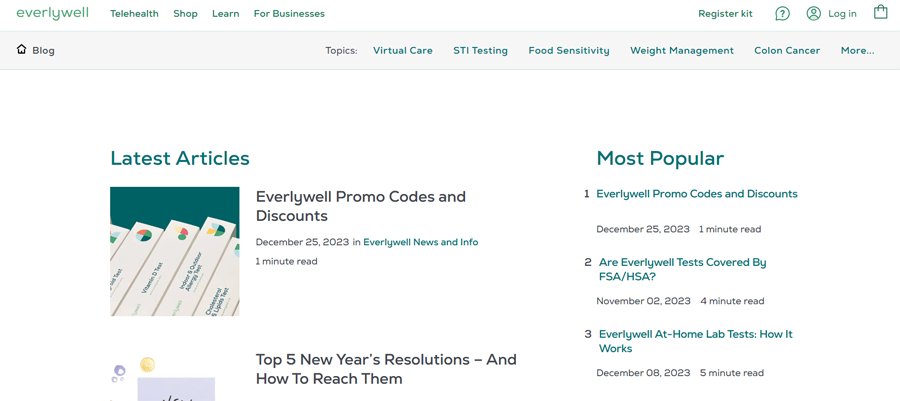
Their at-home food sensitivity test targets consumers seeking specialized health insights. Everlywell’s dedication to this niche is reflected in both its product and its blog strategy. The blog covers topics that are accessible and relatable to the average reader, while also establishing the brand’s authority in the health and wellness sector.
Everlywell expertly navigates the challenge of engaging a specific audience with a blog that resonates with typical readers and simultaneously underscores the brand’s expertise. This strategic alignment of content with the brand’s identity not only attracts readers but also builds trust by providing information that is approachable and informative.
Everlywell demonstrates how to appeal to a niche audience with a blog that balances topics relevant to the average reader and exhibits the brand’s expertise in its field. This integrated approach creates an engaging narrative that strengthens Everlywell’s connection with its distinct customer base.
Rotabull’s blog adopts a distinct approach in addressing its well-defined readership. Unlike Everlywell, which aims to connect everyday life with its health diagnostics product, Rotabull recognizes that its niche—airplane parts—is not inherently relevant to the general public. Instead of artificially linking aeronautical mechanics to daily life, Rotabull tailors its content exclusively to the aviation sector.
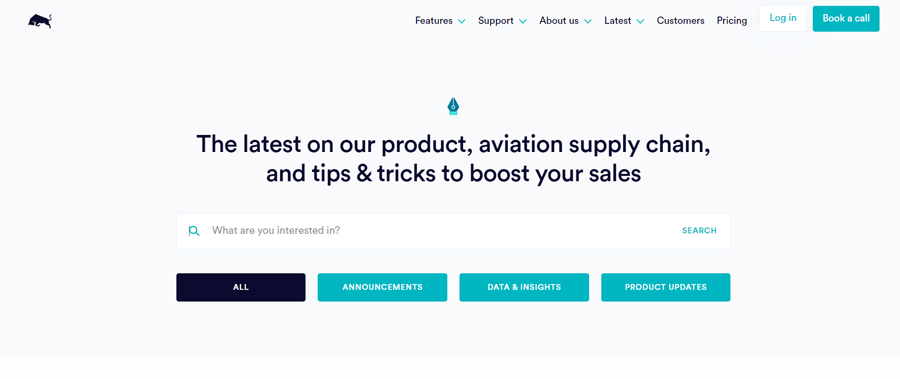
This strategy offers a valuable lesson for B2B companies. Many businesses try to bridge their specialized products with a broader consumer base, often diluting their content’s effectiveness. Rotabull, by steadfastly focusing on its primary audience without attempting to force wider appeal, sets a notable example.
Rotabull focuses on creating content that resonates within the aviation industry. This commitment to its niche not only strengthens Rotabull’s position in the market but also highlights the importance of understanding and serving a specific customer base.
B2B companies can learn from Rotabull’s approach: success lies in developing content that aligns precisely with the unique interests and needs of their target market, rather than stretching to appeal to a broader, less relevant audience. This focus enhances content impact and efficacy within their specific industry.
Conclusion
In sum, examining various business blog examples and understanding their effectiveness, along with dedicating time to structure and organize your business blog, significantly improves your site.
This approach boosts your website’s quality and ensures a wider reach for each article. A visually attractive and engaging site captures and retains viewer attention, potentially leading to higher conversion rates.
These exemplary blogs demonstrate the power of engaging content, consistent branding, targeted audience focus, and value delivery. They captivate and hold their readers’ interest through diverse content forms, narrative techniques, and customer-centric strategies.
Incorporating visuals, interactive elements, and a strong social media presence amplifies impact, builds community, and encourages audience engagement. Ultimately, these business blogs highlight the importance of adaptability and creativity in the digital marketing world, emphasizing the need for businesses to remain current, relevant, and authentic online.
FAQs
Why should a business have a blog?
A business blog is vital for establishing the company as an industry authority. It improves search engine visibility, provides valuable information, and fosters customer engagement. It’s a platform for showcasing expertise and building a community around the company’s products or services.
Why is storytelling important in business blogs?
Storytelling humanizes a brand and creates an emotional connection with the audience. Businesses can use blogs to share success stories, customer testimonials, or their journey, making the content more relatable and engaging.
How can a business blog use SEO to its advantage?
Optimizing blog content for search engines is crucial. This involves using relevant keywords, producing high-quality, shareable content, maintaining a user-friendly website structure, enhancing visibility, and attracting organic traffic.
What are some common mistakes to avoid in business blogging?
Common pitfalls include neglecting SEO, publishing low-quality content, ignoring audience feedback, and lacking a clear content strategy. Successful blogs prioritize quality, consistency, and audience engagement.


